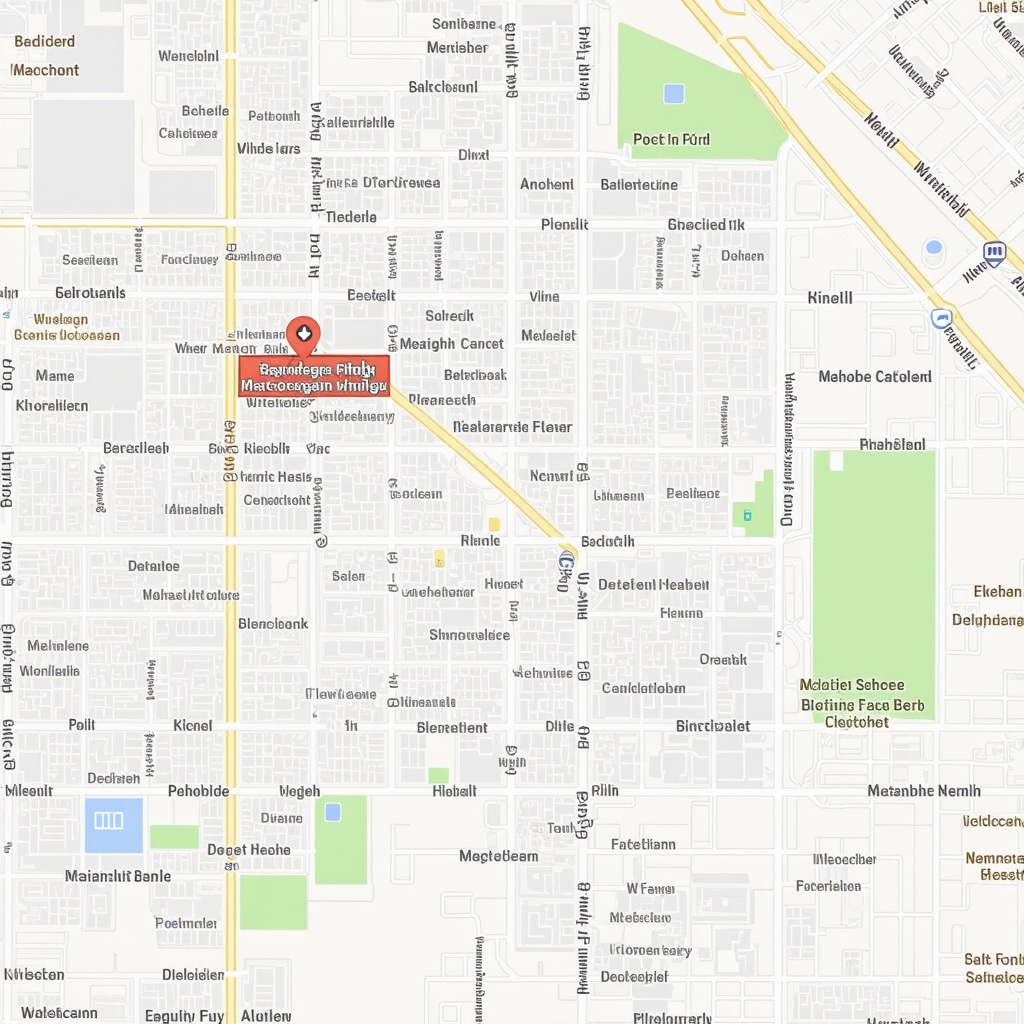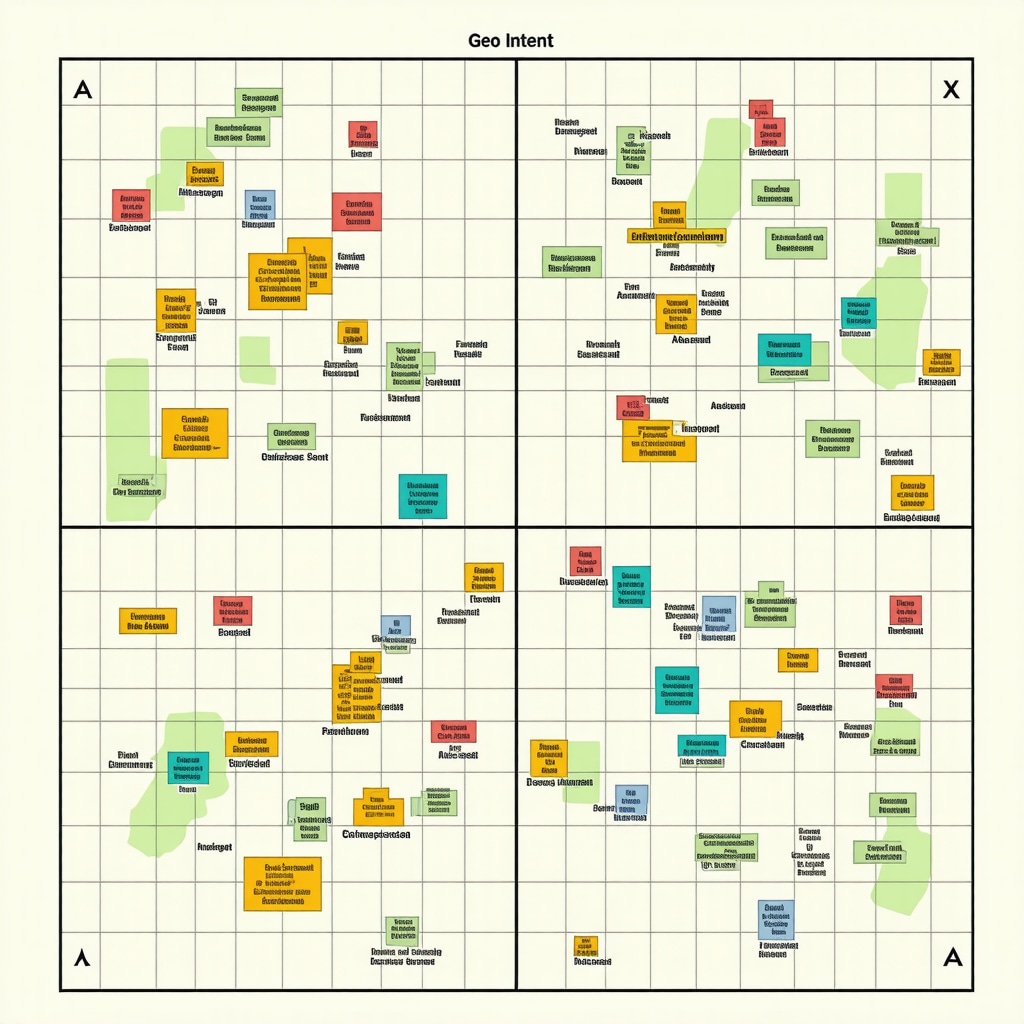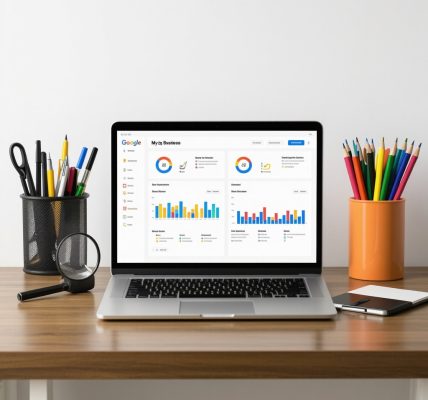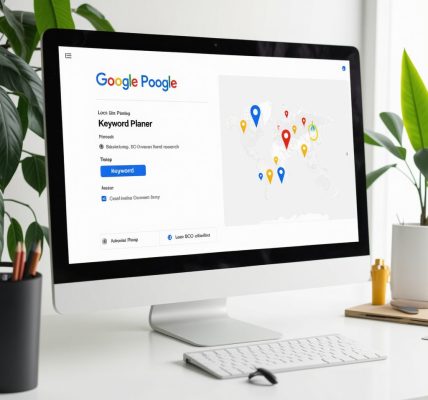Unlocking the Power of Google Keyword Planner for Local Search Dominance
In the fiercely competitive landscape of local SEO, leveraging advanced tools like Google Keyword Planner is no longer optional—it’s essential. As an experienced digital marketing strategist, I have observed that a nuanced understanding of keyword data significantly enhances GMB (Google My Business) optimization efforts. This guide delves into sophisticated strategies for exploiting Google Keyword Planner to elevate your local visibility and outperform competitors.
How Does Keyword Research Shape Local SEO and GMB Strategies?
Effective local SEO hinges on the precise selection of keywords that mirror the search intent of your target audience. Google Keyword Planner provides invaluable insights into search volume, competition, and emerging trends. By integrating these insights, businesses can tailor their GMB profiles, content, and local citations to align with high-impact keywords, thus improving rankings in the local pack.
Harnessing Semantic Keyword Variations for Hyperlocal Optimization
Beyond primary keywords, semantic variations—LSI keywords—capture the contextual nuances of local search queries. For example, a bakery might target “gluten-free bread” but also optimize for related terms like “best gluten-free bakery near me” or “artisan bread in [neighborhood].” This layered approach broadens visibility and enhances relevance, especially when combined with structured data markup.
Strategic Implementation: From Keyword Insights to GMB Content and Citations
Translating keyword research into actionable GMB optimization involves several key steps:
- Optimizing Business Descriptions: Incorporate high-volume, relevant keywords naturally within your business description to improve discoverability.
- Crafting Local Content: Use targeted keywords in posts, Q&A sections, and service descriptions to reinforce relevance.
- Citation Consistency: Ensure NAP (Name, Address, Phone) citations include optimized keywords where appropriate, maintaining consistency across directories.
Analyzing Competition and Identifying Keyword Gaps
Utilize the competitive insights offered by Google Keyword Planner to identify keyword gaps where competitors may be under-optimized. This strategic gap analysis enables you to prioritize high-value keywords, refine your content strategy, and implement targeted citation building, thereby gaining a competitive edge in local search rankings.
What Are the Limitations of Google Keyword Planner for Hyperlocal SEO?
While Google Keyword Planner is a powerful tool, it has limitations in capturing hyperlocal nuances and emerging trends. It provides aggregated search data that may overlook micro-moments or neighborhood-specific queries. Supplementing it with tools like BrightLocal or SEMrush can bridge this gap for comprehensive local SEO planning.
For an in-depth exploration of local SEO tactics, consider reviewing our comprehensive local SEO strategies. Additionally, professional insight and continual learning are vital—engage with industry forums and share your experiences to stay ahead.
Source: Google’s official insights on keyword trends
Unveiling the Hidden Layers of Keyword Data for Local SEO Excellence
While Google Keyword Planner offers a treasure trove of insights, savvy marketers know that its true power lies in extracting and applying nuanced data patterns. By analyzing search volume fluctuations over time and correlating keyword trends with local events or seasonal patterns, businesses can fine-tune their GMB content and local citations for maximum impact. For instance, a restaurant might capitalize on holiday-specific keywords or seasonal menu searches to attract more local diners, thereby boosting visibility in the local pack.
Can Micro-Moments Be Captured Using Keyword Data?
One of the most compelling challenges in hyperlocal SEO is identifying and leveraging micro-moments—those immediate, intent-driven searches that occur in real-time. Advanced tools like SEMrush or Ahrefs, combined with Google Keyword Planner’s core data, can help uncover micro-moment keywords such as “best coffee near me now” or “urgent plumber open today.” Incorporating these into your GMB profile and content strategy ensures your business appears precisely when local prospects are ready to convert. Moreover, understanding these micro-moments allows for the creation of highly targeted ads and promotions that resonate with immediate needs, transforming passive searches into active customer engagements.
Effective Frameworks for Hyperlocal Keyword Optimization
Implementing hyperlocal keywords requires a structured approach. One effective framework is the ‘Geo-Intent Matrix,’ which maps keywords based on their geographic specificity and user intent. High-precision keywords like “emergency locksmith in Downtown” occupy the top-right quadrant, signaling high relevance and urgency. By systematically targeting these phrases in your GMB descriptions, service pages, and local backlinks, you create a layered SEO strategy that dominates neighborhood searches. Regularly conducting local SEO audits using tools like GMB SEO audits ensures your keyword targeting remains aligned with evolving search behaviors.
What Are the Limitations of Relying Solely on Keyword Data for Hyperlocal SEO?
While keyword data provides critical guidance, over-reliance on it can lead to missed opportunities—especially in capturing the full spectrum of neighborhood-specific queries. Local search behaviors are often influenced by cultural, demographic, and behavioral factors that raw data may not fully capture. Therefore, integrating qualitative insights from customer reviews, community engagement, and on-the-ground observations can complement quantitative keyword analysis. Combining these approaches creates a comprehensive local SEO strategy capable of adapting to micro-trends and micro-moments that raw data might overlook.
For a deeper dive into hyperlocal SEO tactics, explore our hyperlocal SEO guide. Continuous learning and strategic experimentation remain vital to outpacing competitors in this dynamic landscape.
Source: Google’s official insights on keyword trends
Deciphering Search Intent: The Nuanced Role of Google Keyword Planner in Hyperlocal SEO
While Google Keyword Planner offers invaluable quantitative data, the true mastery lies in interpreting the subtle signals embedded within search intent. For instance, differentiating between transactional, navigational, and informational queries allows SEOs to craft hyperlocal content that precisely matches user needs. Deep analysis of keyword modifiers such as “near me,” “today,” or “open now” reveals micro-moments ripe for capturing immediate local demand. Integrating these insights with customer behavior analytics enhances your ability to anticipate and serve evolving search patterns effectively.
Leveraging External Data Sources to Enrich Keyword Insights
To transcend the limitations of Google Keyword Planner’s aggregated data, savvy marketers incorporate external insights from industry-specific tools like BrightLocal, SEMrush, or Moz Local. These platforms provide granular data on neighborhood-specific search trends, competitor keyword gaps, and citation opportunities. For example, SEMrush’s keyword gap analysis can reveal underserved local keywords that your competitors have overlooked, enabling you to craft targeted GMB content and backlinks. Combining these datasets fosters a comprehensive hyperlocal SEO strategy rooted in both quantitative and qualitative intelligence.
Creating a Dynamic Keyword Ecosystem: From Research to Real-Time Optimization
Effective hyperlocal SEO demands an iterative approach where keyword insights inform ongoing content and GMB updates. Implementing a dynamic keyword ecosystem involves setting up real-time monitoring of search trends via tools like Google Trends and social listening platforms. For instance, during seasonal events or local festivals, trending keywords can be rapidly integrated into your Google My Business posts, Q&A, and service descriptions, ensuring your business remains relevant and visible. Establishing this agility requires robust data analysis workflows and a commitment to continuous testing and refinement.

Image illustrating the Geo-Intent Matrix, mapping keywords based on geographic specificity and user intent, with examples like ’emergency locksmith in Downtown’ and ‘best coffee near me now.’
Addressing the Challenges of Hyperlocal Keyword Saturation and Data Overlap
One persistent challenge in hyperlocal SEO is navigating keyword saturation without diluting your branding or content quality. Over-optimization can lead to thin content that fails to engage users or rank effectively. To counter this, it’s essential to diversify your keyword portfolio by incorporating long-tail variations, colloquial phrases, and neighborhood-specific slang. Furthermore, leveraging semantic SEO principles ensures your content remains natural and user-centric while targeting multiple related keywords. This balanced approach prevents keyword cannibalization and sustains long-term visibility.
How Can Local Cultural and Demographic Factors Be Integrated into Keyword Strategy?
Understanding the cultural and demographic nuances of your neighborhood can unlock highly targeted keyword opportunities. For example, multilingual communities or neighborhoods with specific cultural festivals may search using language-specific terms or culturally relevant phrases. Conducting ethnographic research and analyzing local review trends can reveal these unique search behaviors. Incorporating such insights into your keyword strategy ensures your GMB profile and content resonate authentically with your audience, fostering trust and engagement.
For those looking to deepen their hyperlocal SEO expertise, exploring case studies from successful neighborhood businesses can provide practical insights. Remember, the key to mastery in this domain lies in ongoing learning and strategic experimentation—don’t hesitate to test new keywords and monitor their impact rigorously.
Source: Google’s official insights on keyword trends
Deciphering Micro-Moment Search Patterns for Precise Local Targeting
Understanding micro-moments—those instant, intent-driven searches—is crucial for hyperlocal SEO success. By meticulously analyzing keyword modifiers such as “near me now” or “urgent service today,” marketers can craft highly relevant GMB content that captures consumers at the exact moment of need. Integrating real-time data from tools like Google Trends with keyword insights allows for agile content adjustments, transforming passive inquiries into active conversion opportunities.
Innovative Strategies to Exploit Neighborhood-Specific Search Variations
Neighborhood dialects, colloquialisms, and cultural vernacular significantly influence local search behavior. Advanced keyword research should incorporate ethnolinguistic analysis and community engagement insights. For instance, a local café might optimize for phrases like “coffee shop downtown” versus “java joint in the Heights,” ensuring relevance across diverse demographic segments. Leveraging local sentiment analysis and review mining further refines keyword selection, fostering authentic connections with community members.
How Can External Data Enrich Your Hyperlocal Keyword Ecosystem?
External data sources such as SEMrush’s Local SEO tools, BrightLocal’s neighborhood search analytics, and Moz Local’s citation reports provide granular insights into local keyword gaps and competitive landscapes. These platforms reveal underserved niche queries and emerging neighborhood trends, empowering marketers to develop targeted content and backlink strategies that resonate with local consumers. Combining these datasets with Google Keyword Planner’s core data creates a multi-dimensional view of the local search ecosystem.
Implementing a Dynamic, Data-Driven Keyword Optimization Framework
Establishing a continuous feedback loop for keyword refinement involves monitoring local search trend fluctuations, seasonal variations, and community event cycles. Employing automated dashboards that track keyword performance metrics enables swift content pivots—such as updating GMB posts or service descriptions during local festivals or seasonal peaks—ensuring your business remains highly visible and relevant. This proactive approach transforms static keyword lists into evolving, responsive strategies that sustain long-term dominance.
< >
>
Image illustrating the integration of Google Trends, SEMrush, and local community data sources into a cohesive hyperlocal keyword strategy framework.
Addressing the Nuances of Cultural and Demographic Influences on Search Behavior
Deep cultural and demographic understanding is essential for crafting resonant hyperlocal keywords. Analyzing local review comments, community forums, and ethnographic research uncovers unique search phrases reflective of neighborhood identity. For example, multilingual districts may search with language-specific terms, requiring bilingual keyword optimization. Incorporating these insights into your GMB profile and content ensures authentic engagement and enhances local trust.
How Can You Systematically Incorporate Local Cultural Factors Into Your Keyword Strategy?
Develop a structured ethnolinguistic research process, including community surveys and review analysis, to identify culturally specific search terms. Use these insights to expand your keyword portfolio with colloquialisms and culturally relevant phrases, and tailor your GMB content accordingly. This approach ensures your business communicates effectively within the local cultural context, fostering deeper community connections and higher search relevance.
For advanced tactics in hyperlocal SEO, consider exploring case studies of neighborhood businesses that have successfully implemented culturally nuanced keyword strategies. Remember, continuous adaptation and community engagement are key to maintaining a competitive edge in hyperlocal search landscapes.
Source: Google’s official insights on keyword trends
Expert Insights & Advanced Considerations
1. Embrace Multidimensional Data Analysis
Utilize Google Keyword Planner alongside tools like SEMrush and BrightLocal to gain a comprehensive understanding of local search nuances. This integrated approach reveals micro-moment keywords and neighborhood-specific trends, enabling hyper-targeted GMB optimization.
2. Prioritize Search Intent Differentiation
Deepen your analysis by categorizing keywords into transactional, navigational, and informational types. This strategic segmentation enhances content relevance and aligns your GMB profile with precise user needs, elevating local visibility.
3. Leverage Seasonal and Event-Based Trends
Monitor search volume fluctuations over time to identify seasonal spikes or community events. Incorporate these insights into your content calendar and GMB updates to maximize relevance and engagement during peak local interest periods.
4. Focus on Micro-Moment Optimization
Target micro-moments by integrating modifiers like “near me now” or “urgent” into your keywords. This tactic ensures your business appears precisely when the local customer has immediate intent, increasing conversion chances.
5. Continuous Data-Driven Refinement
Establish real-time monitoring dashboards to track keyword performance and local search trends. Regularly refine your keyword ecosystem, making data-informed adjustments to your GMB content and citation strategies for sustained dominance.
Curated Expert Resources
- Google’s Official Keyword Insights: Offers authoritative data on search trends and keyword performance directly from Google.
- SEMrush Local SEO Toolkit: Provides granular neighborhood search data, competitor gap analysis, and keyword opportunities for hyperlocal strategies.
- BrightLocal: Specializes in local search ranking analysis, review management, and citation tracking tailored for local SEO mastery.
- Moz Local: Focuses on citation consistency, local listing management, and neighborhood-specific keyword optimization.
- Local Search Association Resources: Offers industry insights, case studies, and best practices from leading local SEO experts.
Final Expert Perspective
Mastering Google Keyword Planner within the realm of local SEO elevates your strategic capacity to dominate hyperlocal markets. By integrating advanced data analysis, understanding micro-moments, and continuously refining your approach with authoritative tools, you position your business for sustainable visibility and growth. To deepen your expertise, explore our comprehensive Google Business Profile optimization guide. Engage with industry peers, share your insights, and stay ahead in this dynamic landscape—your local dominance depends on it.



